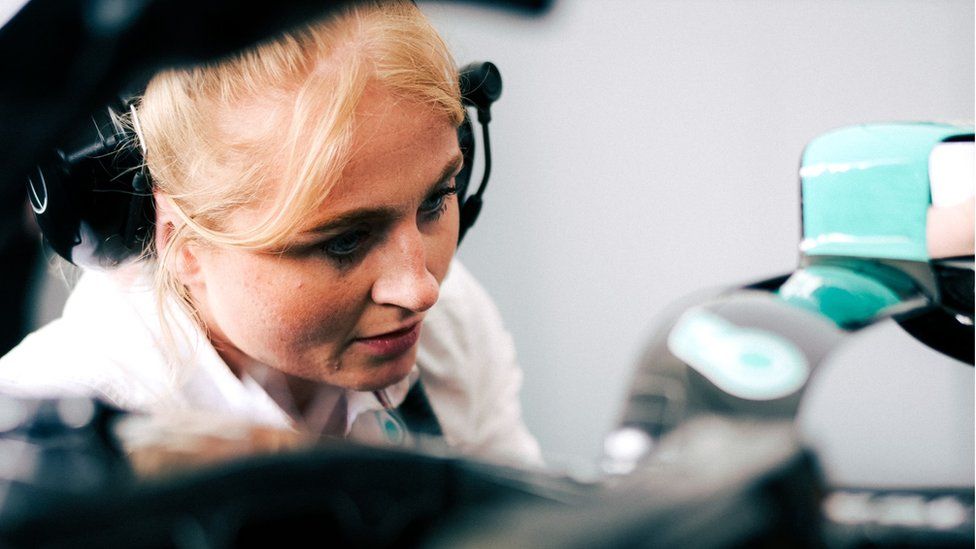
When Formula 1 looked at its workforce six years ago, just 28% of those employed were women. Today that figure stands at more than 30%.
This shift is something Rosie Wait, head of race strategy at Northamptonshire-based Mercedes-AMG Petronas F1, has seen first hand.
She tells how, when she carried out a summer work placement in Formula 1 back in 2008, she could “count the number of females in the engineering office on one hand”.
“It is great to see so many more coming through, both in terms of the graduate intake and when you look down the pit lane,” she says. “You can see things are changing in every team.”
The percentage of women working at Mercedes-AMG Petronas F1 has risen from 11% to 16% in the past four years.
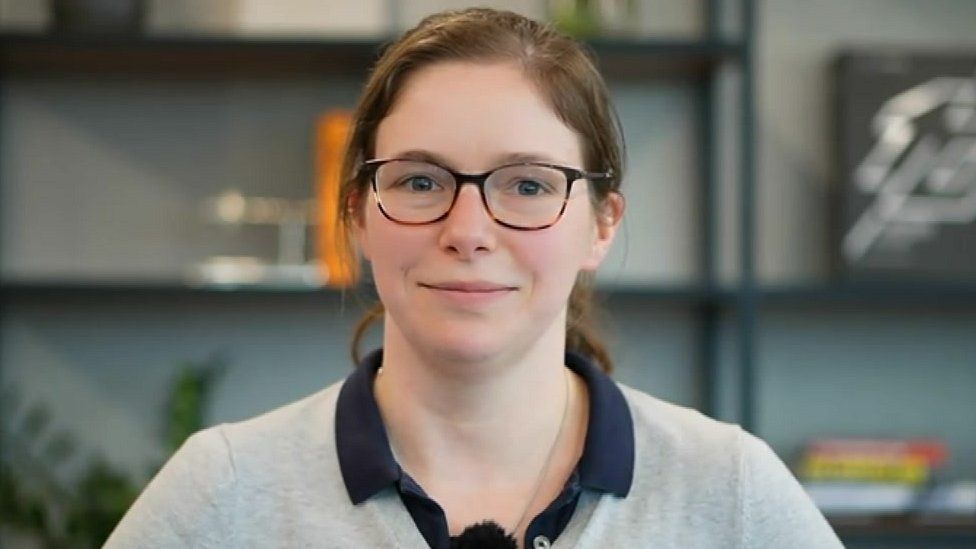
Ms Wait, who studied engineering at university, is in charge of the team which, among many other things, decides the exact moment drivers should come in for a pit stop.
“I’ve got a team of around nine people and it is all about trying to maximise whatever result the car is capable of on any weekend,” she says.
“We have a lot of people back at the factory doing data analysis, building models and running tools to help drive those decision-making processes – to make sure we get the best out of everything.
“During a race you really get those periods when the adrenaline is pumping and you can tell that a certain decision will be make or break – that’s very exciting, it can be pretty scary.
“There’s no such thing as being ‘done’ in Formula 1,” she says. “There’s always more that you could be doing.”
Two years ago, Ms Wait became a mother. She went on maternity leave before returning to a slightly different, but equally senior, role.
“I’ve been able to do that alongside my caring responsibilities,” she says. “My husband is a doctor which means his job is very uncompromising.
“If something comes up, then I am the one who has to compromise and leave work. I hope that becomes more normal in the industry both for the women and the men.
“You can have both a career and a family and be actively involved in both. It is tough, it is tough for anybody, but it really is working.”
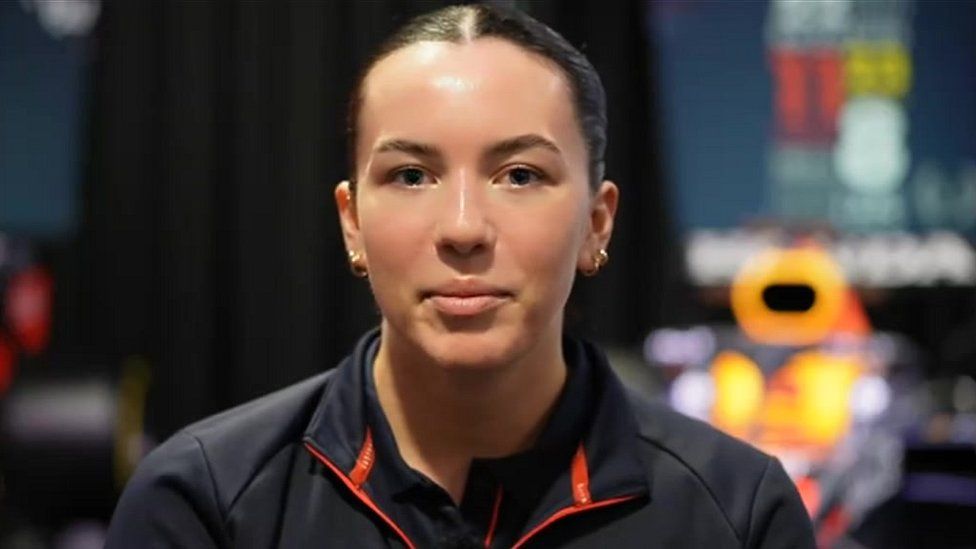
When Emmie Jones was 16 and living in Wigan, she handed her CV to what she describes as a “back street garage”.
“I remember being told I belonged over the road in the offices instead.”
She is now an engine technician for Milton Keynes-based Red Bull Powertrains.
Joining Formula 1, Emmie says, is “the best decision I’ve made” and she is currently working on the 2026 Red Bull engine.
From a young age she shared a passion for Formula 1 with the rest of her family.
“I got started by finding my love for motorsport with my parents and my brothers down at the local racetrack,” she says.
“Then I worked in the garage with my dad and I always knew that I wanted to be a mechanic.
“I’ve got quite a persistent mother who said if I was going to do it, then I should do it at the top level.”
Ms Jones now works as a trackside member of staff looking after the engines.
“If you love Formula 1 like I do then the job is easy, though you either have a life or you have Formula 1 – you don’t have both,” she suggests.
“I’ve been in Formula 1 for five years and it is everything I expected and more. It is just so enjoyable, it is like its own little family.
“The best bits are the people you meet, the countries you see and the winning.”
The last women to compete as drivers in Formula 1 races were Divina Galica and Lella Lombardi during the 1970s.
Earlier this year, the former test driver driver Susie Wolff was appointed managing director of the F1 Academy, the all-female driver category that aims to develop and prepare young drivers to progress to higher levels of competition.
“I think there is a massive push to get a female driver,” says Ms Jones. “Personally, I think that once one is ready and competitive enough then she will get a seat in Formula 1.”
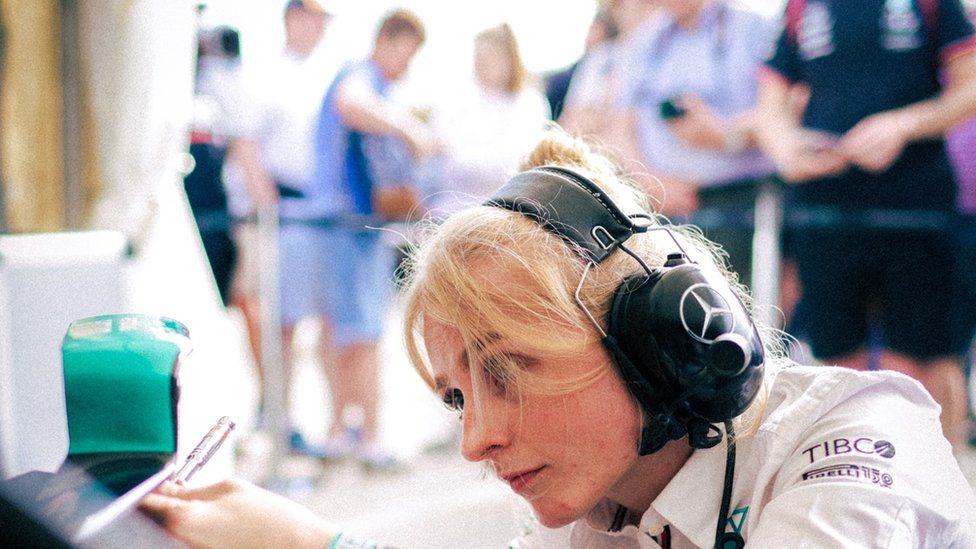
Fired by a passion for racing, Abbie McMurray watched Formula 1 throughout her childhood.
But imagining herself actually working on racing cars, she says, was difficult.
“When I first wanted to try to get into this,” she says, it was all “unknown” and she worried about whether she would “fit in”.
“It was hard to imaging being here,” she says.
“But in recent years it does feel that the landscape has changed and it is being opened up for more and more people.”
Naturally competitive, she says part of her motivation was just to “see if I could do it”.
A trainee with the Mercedes F1 team, she currently works on previous seasons’ cars.
“The eventual goal is to be full-time trackside, working on builds, set-ups and strip-downs of the cars,” she says.
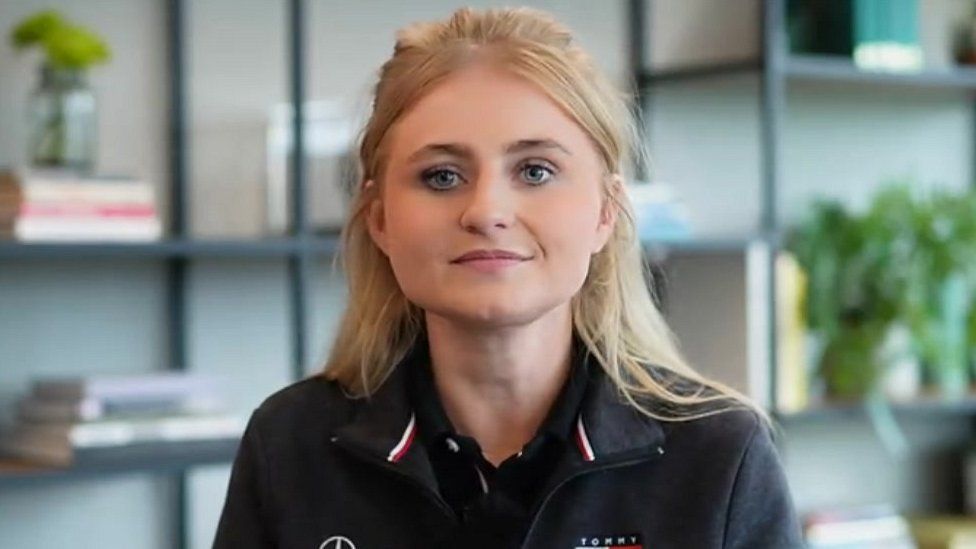
“There’s no denying it is male dominated.
“As a mechanic I don’t think there are that many of us in F1 and there have been physical challenges I’ve come across – such as tools that are clearly made for an average man when I am quite a small girl.
“I have to adapt and I like the challenge of it.
“Since I have joined the team I feel I am treated exactly the same and I think that is exactly the equilibrium we should be working for.”

Find BBC News: East of England on Facebook, Instagram and Twitter. If you have a story suggestion email eastofenglandnews@bbc.co.uk